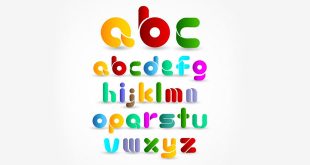How To Use Apostrophe
Apostrophe With Singular Possessions Example
Apostrophe can be used to show singular possessions. To denote this, just hang an apostrophe after the noun followed by an “s”. You can use this method even if the word ends in “s”. Following are some examples:
- These are Ali’s books (This indicates that the book belongs to Ali).
- Ms. John’s house is very well arranged.
- Goa‘s weather is quite pleasant.
- Ms. Anna’s daughter has gone abroad.
- Da Vinci’s artwork is unparalleled.
- It is very difficult to get Dr. Patrick’s appointment.
- This cross’s edges are rough.
Apostrophe With Plural Possessions Examples
Apostrophes can be used to indicate plural possessions as well. Most of the plural words end in “s”. To indicate plural possession, keep the apostrophe at the end of the word and do not follow it up with another “-s”. Look at the examples for a better understanding.
- The girls’ swing sets are not yet arranged (this indicates the swing sets belonging to all the girls)
- The Johnsons’ house is nicely arranged.
- The horses’ hay is damp.
- Sharmas’ car was stolen from their house.
- The ladies’ toilets are out of bounds.
- Laurens’ children are very naughty.
- The fairies’ wings glistened in the moonlight.
- The children’s nannies have been trained thoroughly.
Apostrophes To Denote Joint Ownership
Apostrophe should be used carefully when you indicate joint ownership. While indicating this, you should hang an apostrophe, followed by “-s”, to the last noun listed. The examples listed below will explain it to you.
- Emma and Nicole’s school project ( This indicates that Emma and Nicole worked together on the same project)
- Ben and Jerry’s Cherry Garcia Ice Cream Parlor
- It is Andrew and Jacob’s factory.
- This is India and Pakistan’s problems.
- Cesar and Maribel’s home is constructed of redwood.
Apostrophes To Denote Separate Ownership
To indicate separate ownership, use apostrophe, followed by “-s” separately, with each of the nouns. Look at the examples for more details.
- Emma’s and Nicole’s school projects (This indicates that each girl has her own project.)
- Those are Andrew’s and Jacob’s factories.
- These are India’s and Pakistan’s problems.
- Cesar’s and Maribel’s homes are constructed of redwood.
Apostrophe With Indefinite Pronouns
Apostrophes can be used with indefinite pronouns like someone, anybody, etc. To indicate possession, add apostrophe and “-s” after the indefinite pronoun. The examples given below will explain it to you.
- I found someone’s book on the desk.
- Somebody’s phone was left in the office.
- It is not anybody’s fault that the meeting got cancelled.
Apostrophe With Abbreviations
Apostrophe can also be used with abbreviations. The usage is more or less the same as with normal nouns. Have a look at the examples given below.
- That CPA’s salary is twice of what mine is.
- She is not sure I understand the MDRA’s mission.
- The RTC’s new payment policy was not practical.
- A PhD’s value does not decrease with time.
Apostrophe With Contractions
Sometimes apostrophe is used to indicate one or more missing letters. It happens mainly in informal writing. For example, we use “he’s” instead of “he is” and “isn’t” instead of “is not”. Here, the apostrophe with “-s” denotes the missing word. Refer the examples below to understand it better.
- She’s going to school. (She is going to school.)
- It’s true that I went there yesterday.
- I’m going to my native today.
- Who’s participating in the essay competition?
- He’ll send me a book today.
- They’ve reached.
- He said he couldn’t make it to the meeting this morning.
- It wasn’t his fault that he missed the train.
- It doesn’t look like it rained.
- It isn’t fair that you lie to your parents.
- I couldn’t say anything to him.
Its & It’s
The usage of apostrophe with the pronoun “it” is always a matter of confusion. However, ‘its’ and ‘it’s’ carry different indications. “Its” is a possessive pronoun i.e., “its” is the possessive form of “it” denoting “it is” while, “It’s” is a contraction of the phrase “it is” (or “it has”). The examples listed below will help you to eliminate confusions, if any.
- It’s been good to know you. (it has been good to know you)
- It’s a bird! (It is a bird!).
- Its wing is broken!
- It’s your fault.
- It’s been a long time since we met.
- It’s raining!
- It’s your right to refuse the invitation.
- It’s been great getting to know you.
So, this is how you use apostrophes. These being one of the most extensively used punctuation device, it is not wise to stay away from learning about apostrophes while taking your grammar classes. You might be already aware that using apostrophe in an inappropriate place can alter the meaning as such. Hope the above mentioned examples helped you to understand the concept well.
 Class Notes NCERT Solutions for CBSE Students
Class Notes NCERT Solutions for CBSE Students


